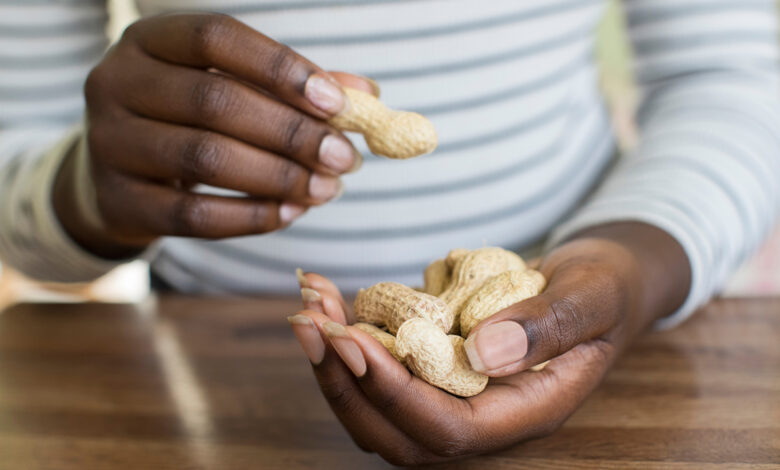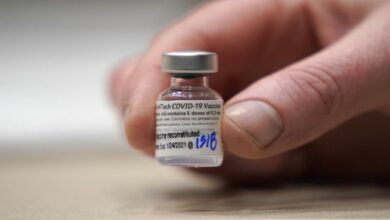Peanut allergies: What to know before kids return to school

Peanut allergies are one of the most common causes of severe allergy attacks and the most common food allergy in children under age 18.
With children once again returning to classroom settings amidst the COVID-19 pandemic and vaccinations being opened up to younger age groups, food allergies remain a growing food safety and public health concern.
According to the U.S. Centers for Disease Control and Prevention (CDC), food allergies impact about 2 students per classroom.
FALL ALLERGIES WILL BE IN ‘FULL FORCE’ THIS YEAR, EXPERTS SAY
Peanuts are one of eight foods or food groups that account for the most serious allergic reactions in the U.S.
Strict avoidance of the food allergen is the only way to prevent a reaction and, with peanut allergies, constant vigilance and attention are required.
According to the Mayo Clinic, peanut allergy occurs when the immune system mistakenly identifies peanut proteins as harmful substances and direct and indirect contact can cause the immune system to release symptom-causing chemicals into the bloodstream.
Symptoms include skin reactions like hives or swelling, itching or tingling around the mouth and throat, digestive issues like diarrhea or vomiting, a tightening of the throat, runny nose and shortness of breath or wheezing.
Additionally, peanut allergy is the most common cause of food-induced anaphylaxis, with requires treatment with an epinephrine autoinjector and a trip to the emergency room.

FILE: Millions of children are allergic to peanuts, and some may have life-threatening reactions if accidentally exposed to them.
(Reuters)
Signs of anaphylaxis can include constriction of airways, a rapid pulse, throat-swelling, a severe drop in pressure and dizziness, lightheadedness, or the loss of consciousness.
In schools, it is not always easy or possible to avoid certain foods and the CDC recommends that schools, aftercare programs and early care and education programs develop plans for preventing an allergic reaction and responding to a food allergy emergency.
Steps toward that end include ensuring the daily management of food allergies in individual children, preparing for these food allergy emergencies, providing professional development on food allergies for staff members, educating children and family members and creating and maintaining a healthy and safe educational environment.
POISON IVY VACCINE MAKING PROGRESS: REPORT
The Mayo Clinic advises making sure that a child knows to ask for immediate help, using a written plan in case of an allergic reaction, discouraging children from sharing foods, making sure an epinephrine autoinjector is always readily available and having a child wear a medical alert bracelet or necklace.
For some, further treatment – including speaking to the child’s allergist – may be warranted.
Notably, in 2020, the U.S. Food and Drug Administration (FDA) approved Palforzia [Peanut (Arachis hypogaea) Allergen Powder-dnfp] to mitigate allergic reactions, including anaphylaxis, that may occur with accidental exposure to peanuts. Palforzia is the first drug for the treatment of peanut allergy in children.
“Peanut allergy affects approximately 1 million children in the U.S. and only 1 out of 5 of these children will outgrow their allergy. Because there is no cure, allergic individuals must strictly avoid exposure to prevent severe and potentially life-threatening reactions,” Peter Marks, director of the FDA’s Center for Biologics Evaluation and Research, said in a release at the time. “Even with strict avoidance, inadvertent exposures can and do occur. When used in conjunction with peanut avoidance, Palforzia provides an FDA-approved treatment option to help reduce the risk of these allergic reactions in children with peanut allergy.”
Palforzia may be initiated in individuals ages 4 through 17 years with a confirmed diagnosis of peanut allergy and may be continued in individuals 4 years of age and older. Those who take Palforzia must continue to avoid peanuts in their diets.
Palforzia does not treat allergic reactions and should not be given during an allergic reaction. Palforzia can cause anaphylaxis.
CLICK HERE TO GET THE FOX NEWS APP
“Because of this risk, children taking Palforzia should still have injectable epinephrine with them at all times,” the drug’s website reads.
In clinical studies, the most common side effects were stomach pain, vomiting, feeling sick, itching or burning in the mouth, throat irritation, cough, runny nose, sneezing, throat tightness, wheezing, shortness of breath, itchy skin, hives and itchy ears.
Source link





